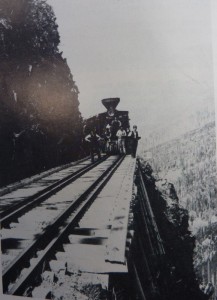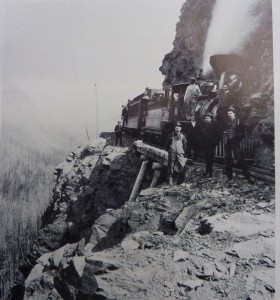Field Trip: Kaslo & Slocan Railway in the Kootenays
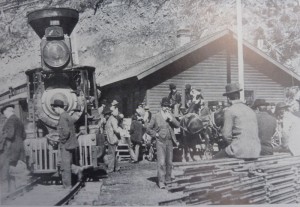
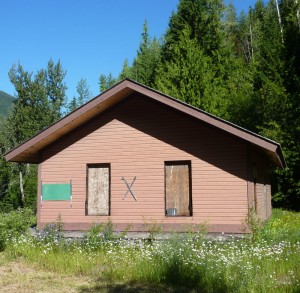
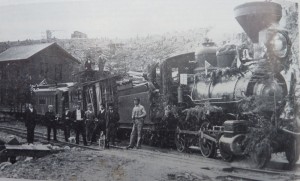 Click on each picture for a closer link!
Click on each picture for a closer link!
.
On August 5th, we published a quiz question with a number of photos of a pair of mystery stations. Two of these colour photos are repeated here. Stephen Gardiner was quick to respond with the right answer as follows.
“The sign in the picture with you is the giveaway, you were ghost towning in B.C. The station you are standing at is Cody B.C., a mine ghost town on the Kaslo & Slocan. The replica is in Sandon, just up the line. Once I saw the name on the picture, Google filled in the gap with a quick search, no points for knowing, just for being able to look stuff up!!”
.
What Stephen did was to zoom in on the Cody station picture where I was standing in the doorway. If you do, you can barely read a sign on its side that says “Cody BC”. Later Josh Soles also identified both stations as being at Cody which was not quite the right answer. I spent two great weeks in July in Sandon B.C. which is pretty much a ghost town now with perhaps only three people living there year round.
.
Cody and Sandon were established shortly after the discovery of zinc, lead and silver deposits in 1891 in the valley in the mountains in which they nestled. The CPR first built a railway line from Kaslo Lake to the foot of the valley at a place called Three Forks. Not to be outdone, the Great Northern Railway built the 3 foot gauge Kaslo & Slocan (K&S) Railway starting at Kaslo in the next valley over and climbing quickly up 3.35% grades high on the mountain and then circling in on Sandon bringing railways directly to that city and on to Cody further up the mountain. The CPR quickly responded by extending their railway using numerous steep switchbacks up the valley to compete with the K&S. Dropping metal prices plus destructive forest fires and massive landslide eventually did the railway in by 1910 and remnants eventually were regauged and became an isolated part of the CPR sytem.
.
In the attached black and white photos above , we see trains in Sandon and one of them at the Sandon Station when the railway was operating. Below we see photos of the most spectacular part of the railway where the railway clung to the side of Payne Mountain far above the valley floor. Part of the railway is now a hiking trail and I could still see remnants of the many trestles and even some rail here and there.
.
More on the K&S can be found here and in a great book called “The Sky Line Limited”.
.
Posting and pictures by Russ Milland
.
